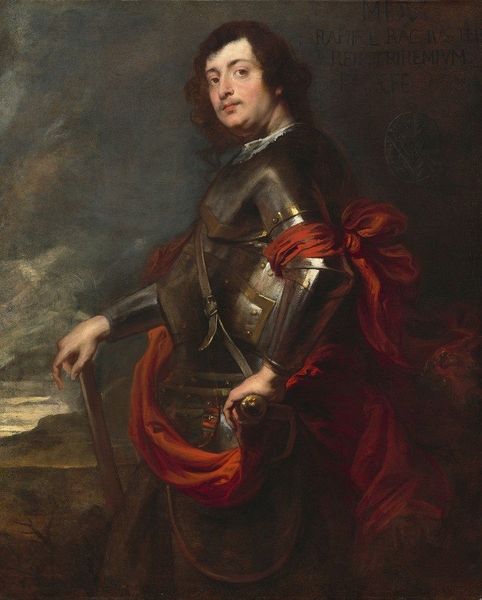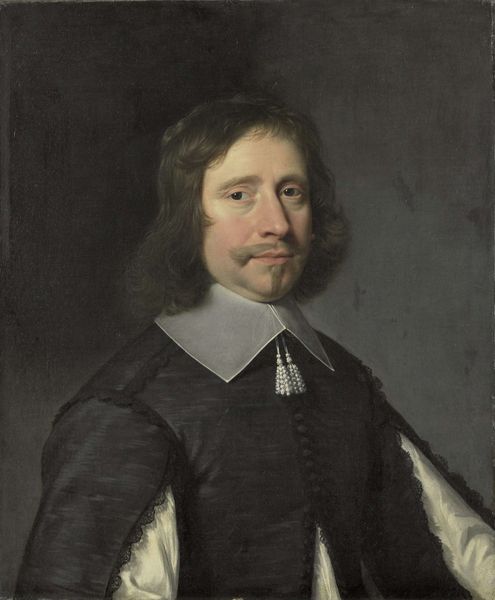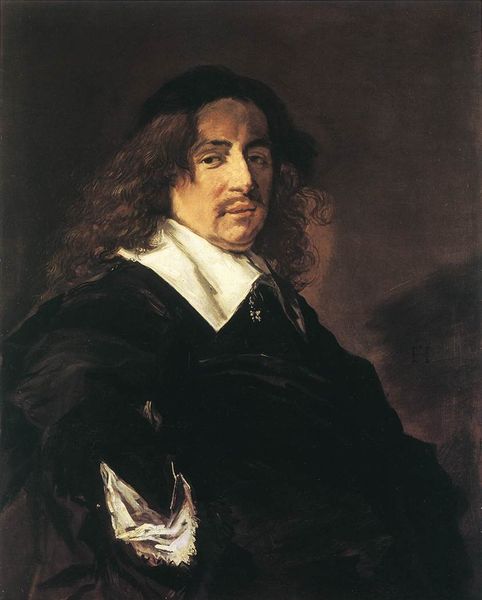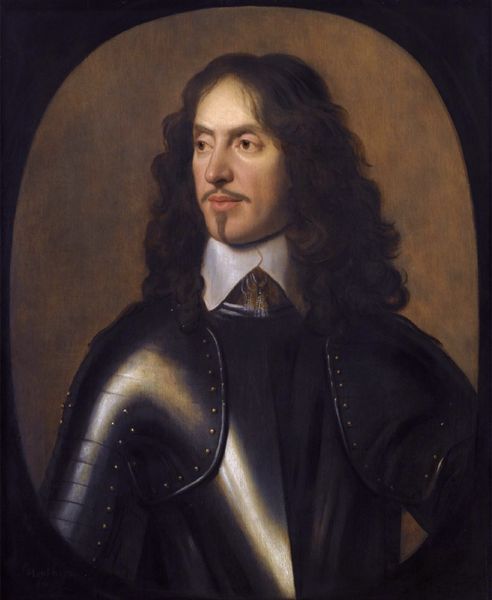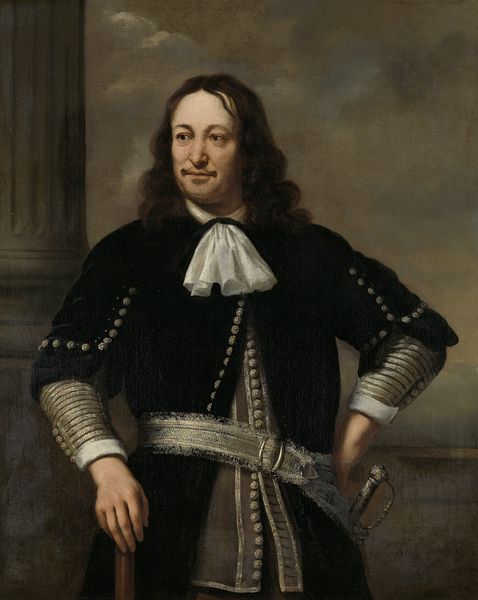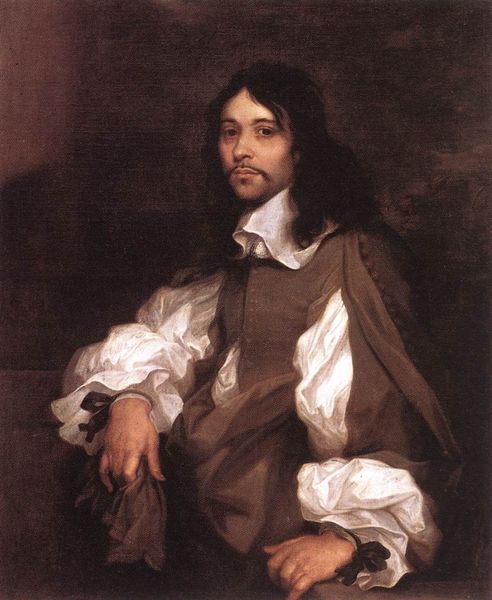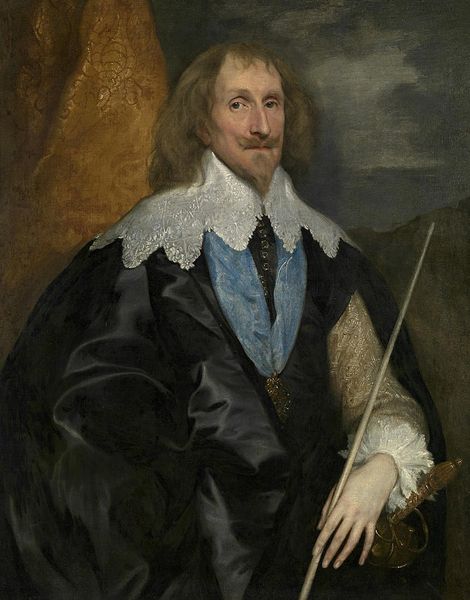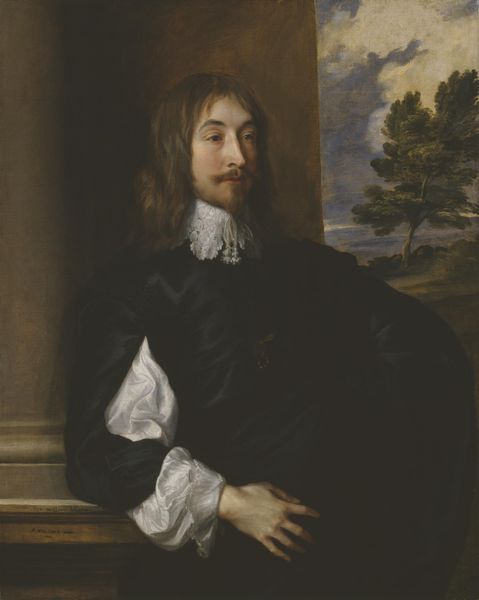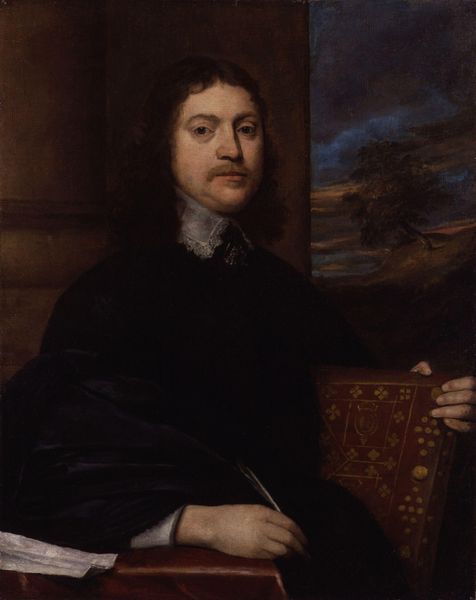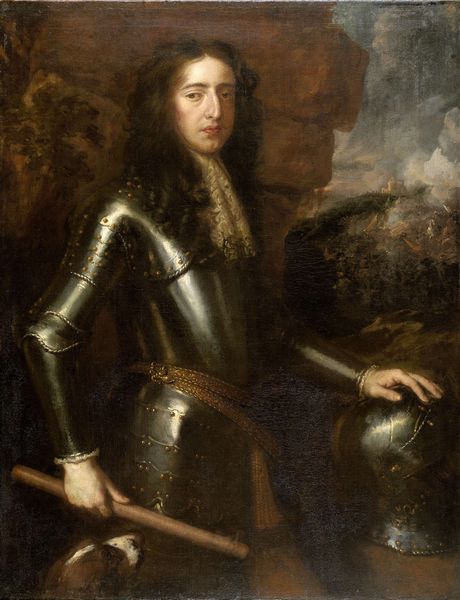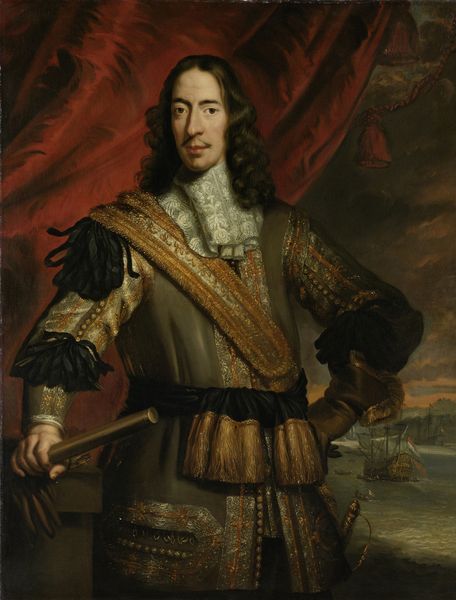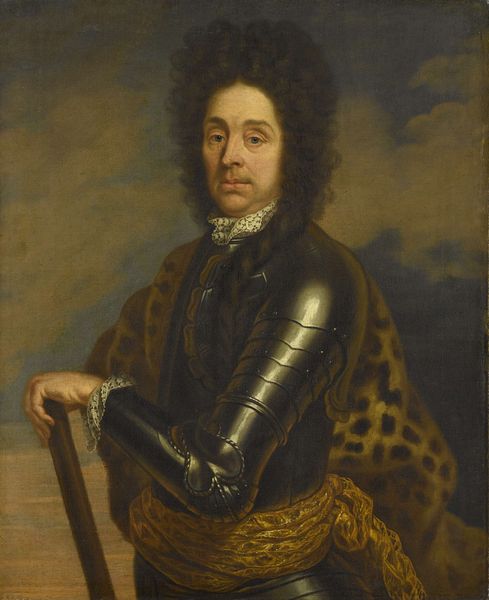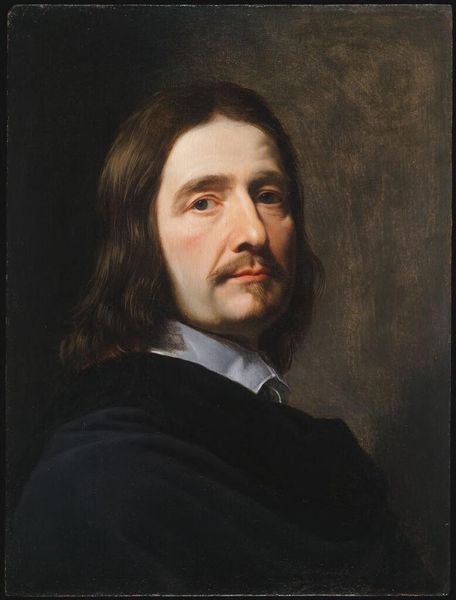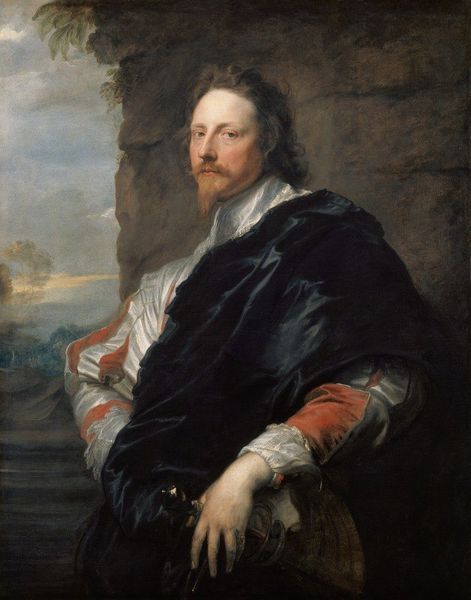
oil-paint
#
portrait
#
baroque
#
oil-paint
#
history-painting
Copyright: Public domain
Editor: This is William Dobson's "Portrait of Edward Hyde," painted in 1643 using oil paints. It feels… dramatic. The stormy background contrasts sharply with the sitter's opulent attire. What structural elements define this painting for you? Curator: I'm drawn to the dynamic interplay between light and shadow. Notice how Dobson uses chiaroscuro to sculpt Hyde's face and attire. It imbues the subject with a palpable sense of presence. Consider the tension between the textured drapery and the smooth, reflective armour, each showcasing a different facet of Hyde's character. Editor: The textural contrasts are striking. I hadn't fully appreciated how the rendering of fabrics against the metal adds such depth. Are there other visual contrasts worth noting? Curator: Absolutely. Look at the diagonals created by Hyde's pose and the angle of his sword, intersecting with the more stable horizontal of the table he leans upon. This creates a compelling dynamism. And then think about the color; what's its semiotic role? Editor: I guess the darker armor and backdrop make the golden fabric even richer. It does feel staged but impactful in communicating power. What strikes you most? Curator: I am most affected by the asymmetry within the portrait. The turbulent, almost chaotic background presses in on the rigidly structured figure, creating tension between stability and the unknown. The subject embodies a society caught in change, struggling between conflicting structures. Editor: I can see how these formal elements reflect social tension! I learned how carefully constructed images transmit meaning. Curator: Yes, analysing formal structures reveals hidden complexity within artworks. I will not view portraits the same way again.
Comments
No comments
Be the first to comment and join the conversation on the ultimate creative platform.
